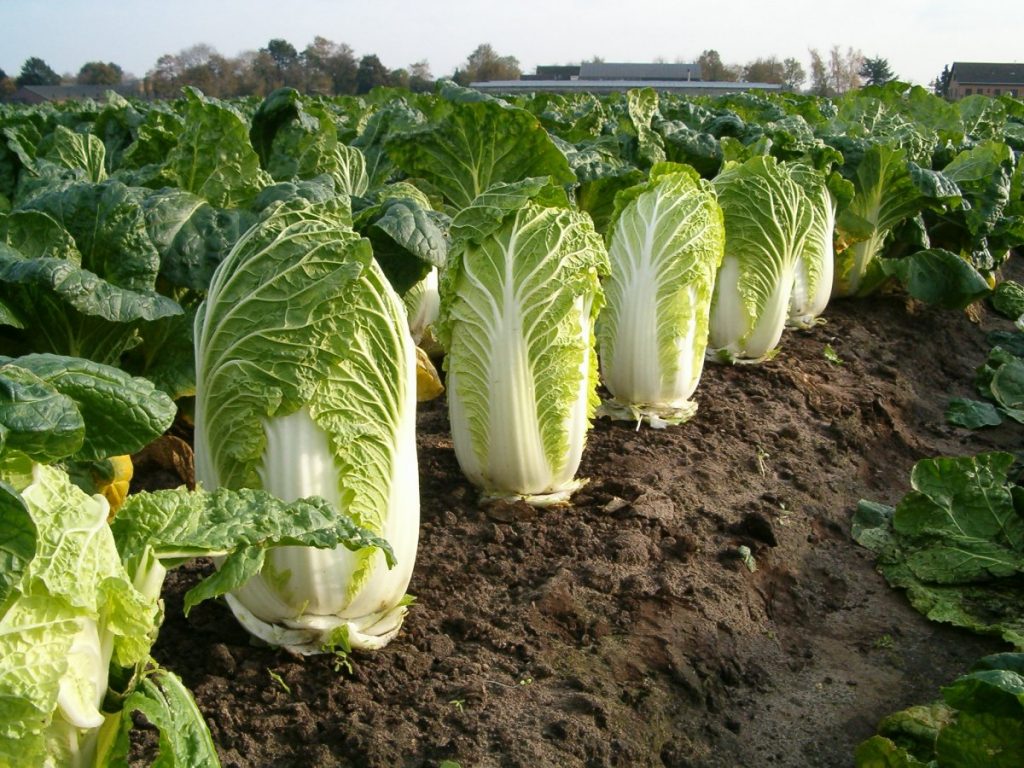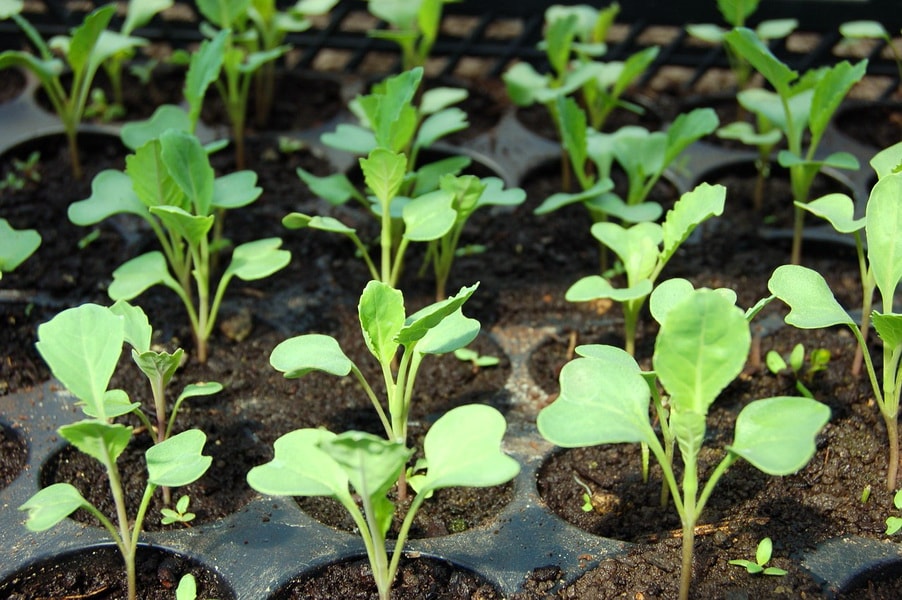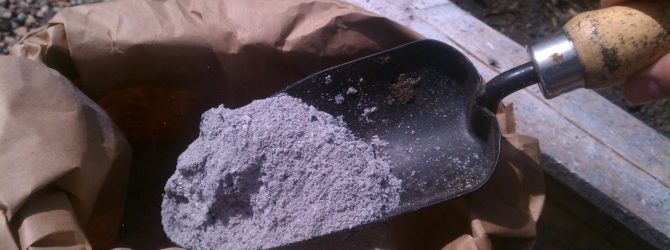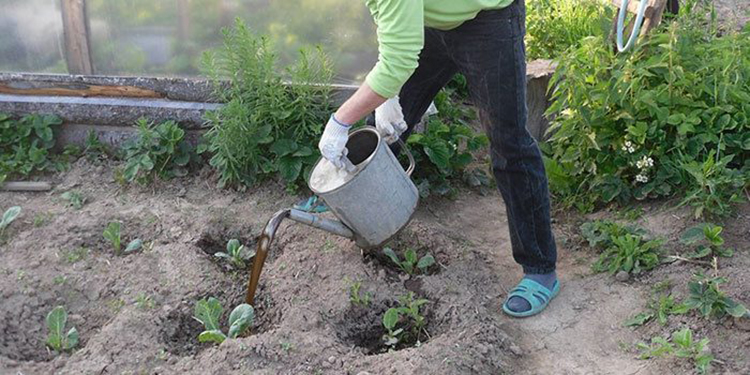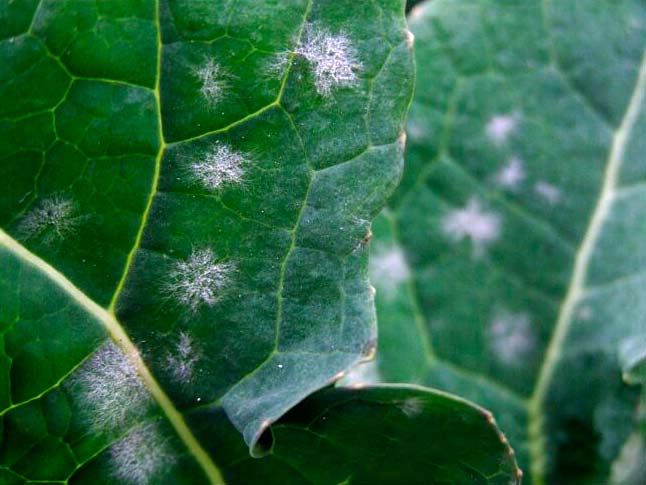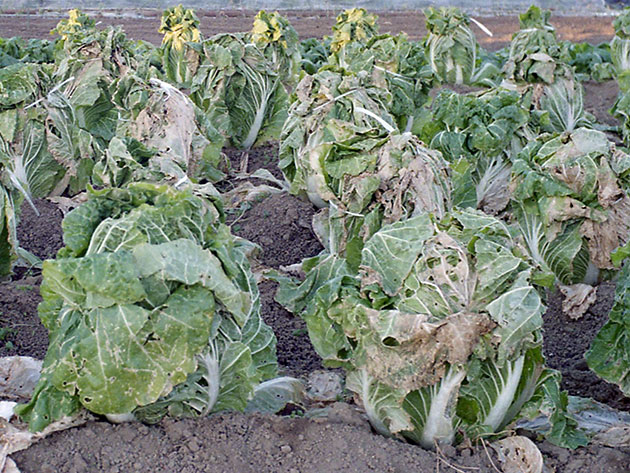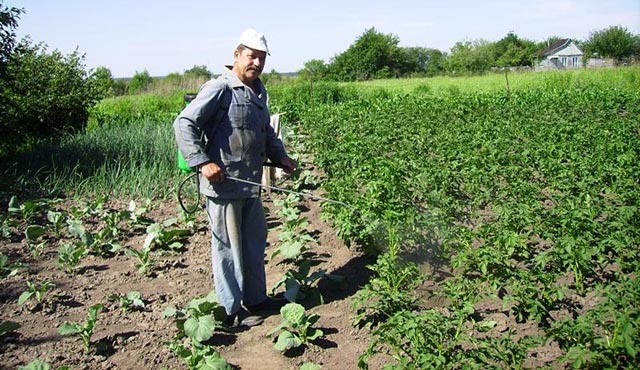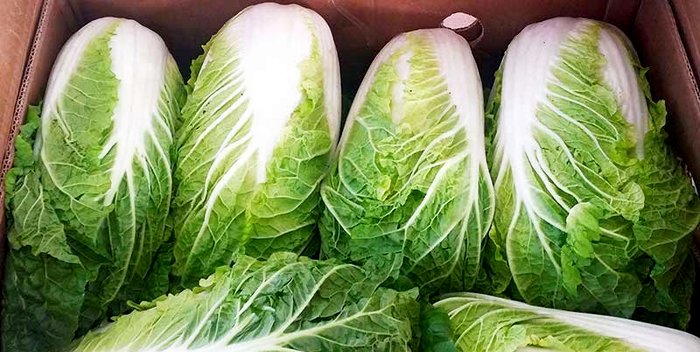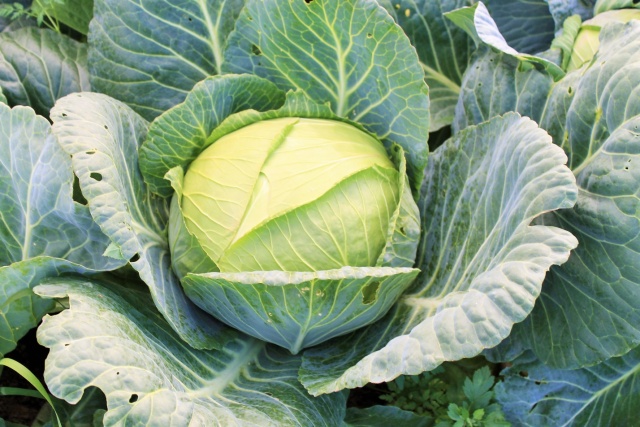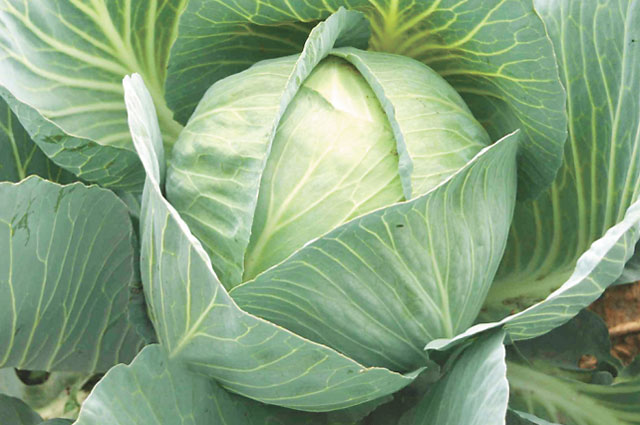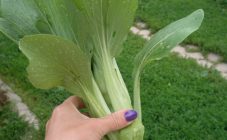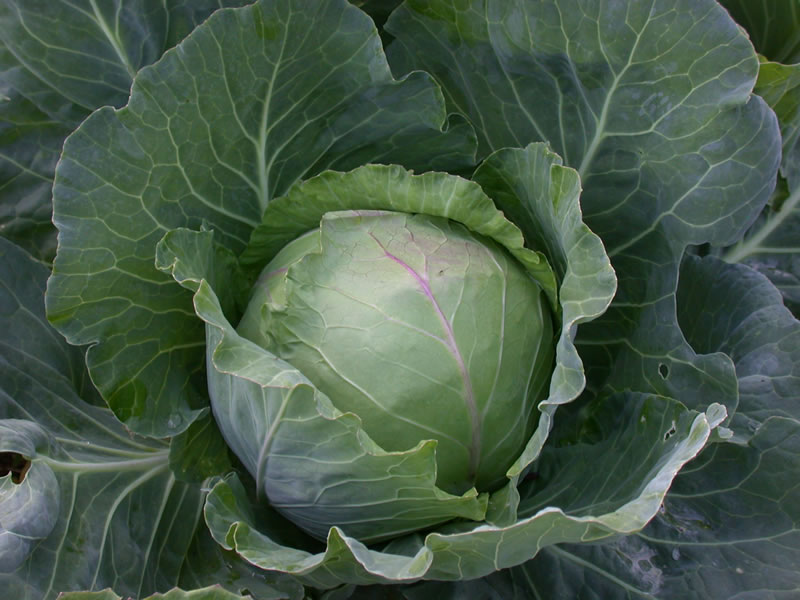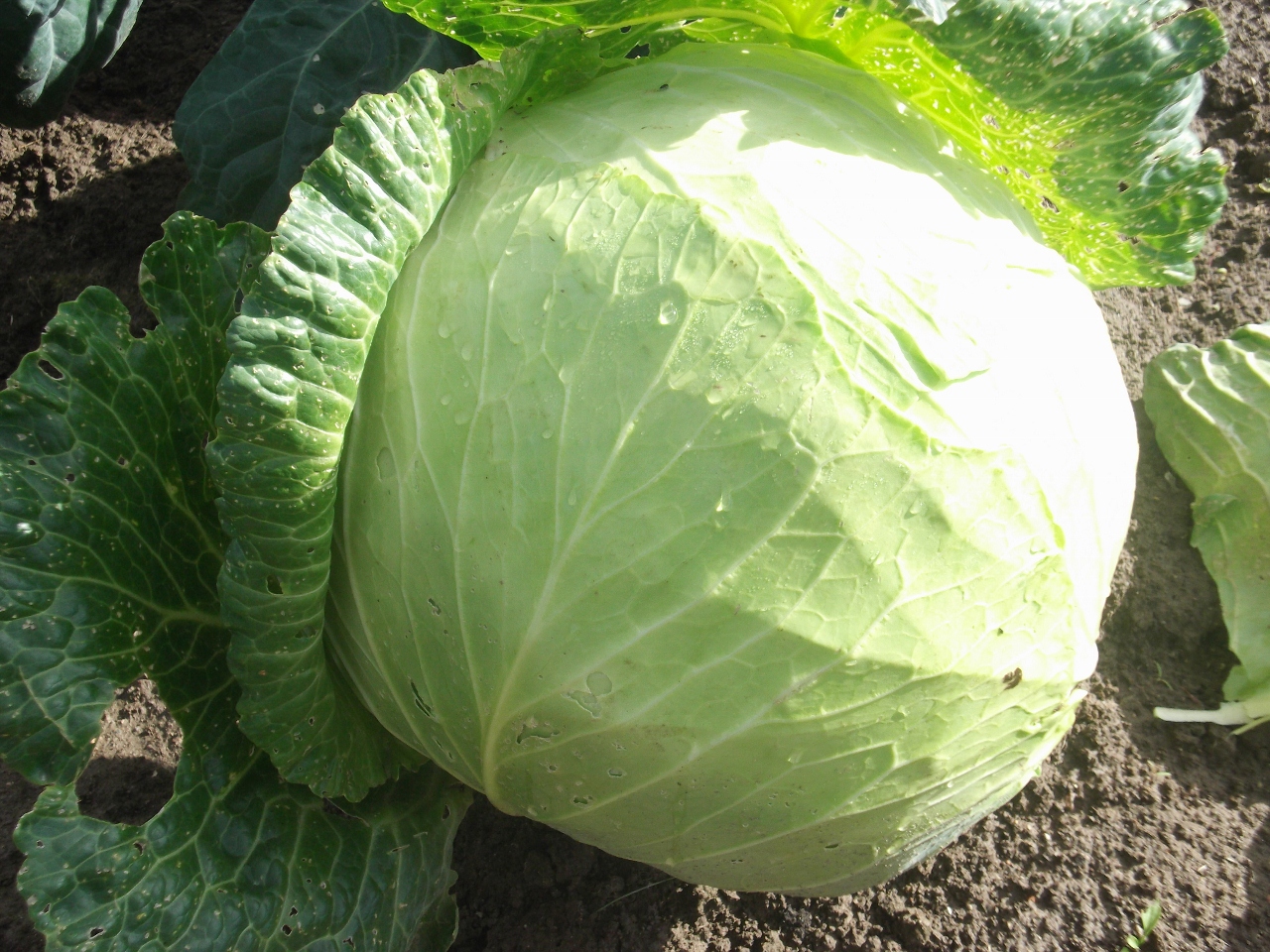Content:
Peking cabbage (petsai) belongs to the group of salad varieties. The plant tolerates a sharp drop in temperature. Although it is a two year herbaceous crop, it is grown on a one year cycle.
General information about the plant
There are 2 types of this cabbage. The first type is elongated heads of cabbage. Their length ranges from 0.3 to 0.6 m. Fruit colors vary from light yellow to bright green. The second species has a leafy structure without a head of cabbage. Hybrids of Cha-Cha, Asten, Monaco, Vorozheya are popular among gardeners. Nika, Glass, Kudesnitsa, which belong to the head cabbage species. Of the leafy plants, the Khibinskaya variety is in great demand among gardeners.
Growing petsai seedlings
For growing Chinese cabbage seedlings, you should choose pots with peat mixture or cassettes. The timing of the cultivation of the seed greatly depends on the type of soil:
- if a greenhouse or greenhouse is used for planting a plant, the period from the last week of January to the first days of February is selected for planting the selected seed variety;
- when it is planned to use an open area for cultivation, the seedlings of Peking cabbage should be planted no earlier than the last days of March or early April.
For germination of seeds, soil of a loose consistency is selected.
The largest grains are selected, immersed in a glass of water. Pop-up instances are thrown away. The remaining seeds must be sown in pots or cassette cells with soil. They are buried 5-10 mm, watered with warm water. The containers are transferred to a warm room, where the temperature is maintained at 15-18 ° C. You need to take care of germinating grains as follows:
- water once every 5 days;
- apply mineral fertilizers 3 days after sowing.
A week later, the first shoots will appear, which need to be sprayed with warm water once every 3-4 days. The bushes are thinned when 2 leaves appear on them, and then after 10 days. The first time, gaps of 70 mm are left between them, and during the second procedure, these segments are increased to 20-30 cm.
When they are 25-20 days old and each shoot will have 3-4 leaves, the plants can be transplanted. For most of the southern regions and central Russia, the optimal time for this procedure is early May.
For this species, you need to pick up the soil. It should be light, have neutral acidity, and good drainage.
Peking cabbage seedlings should not be placed in places where radish and similar crops grew up to this time. The selected area should be well lit. It is recommended to plant the sprouts according to the following scheme:
- If open soil is used, the bushes are planted in a 0.3 X 0.25 m pattern. This system avoids shading of nearby plants.
- It is necessary to plant in a greenhouse or greenhouse according to the scheme 0.1 X 0.1 m, if the hybrid is leaf. When the head species is planted, the format is changed to 0.2 X 0.2 m.
Before the seedling is placed in the hole, wood ash and superphosphate are added there.
Row spacing is loosened once a week. Further care consists in timely watering, eliminating weeds, feeding, preventing diseases.
Peking cabbage seedlings should be watered once a week. Each bush takes from 10 to 20 liters of water, but it is not recommended to swamp the garden. Increase the irrigation intensity if the air temperature rises to 25 ° C. Peking cabbage seedlings grow well if the farmer uses a sprinkler system for refreshing irrigation.
To eliminate the danger of transmission of fungal infections from weeds, they are weeded, and the soil is mulched with peat. In this case, it is necessary to ensure that the earth does not fall on the upper bud of the hybrid.
The first feeding is done before the Chinese cabbage blooms. Apply a solution of mullein in a ratio of 1: 8 with water. The second time it is introduced into the soil after the buds fall and the flowering phase ends.
Peking cabbage seedlings are affected by the following infections:
- leaf spot;
- powdery mildew;
- bacterial rot;
- vascular bacteriosis;
- blackleg;
- marginal burn;
- point necrosis.
To prevent the first disease, the remnants of old crops are removed from the beds. To eliminate the threat of infection, it is necessary to grow Chinese cabbage seedlings after rinsing the seeds in warm and cold water.
Powdery mildew is fought with an aqueous solution of fly ash or sulfur. Hybrids are sprayed with these preparations after planting on the site, and then the procedure is repeated after 6-7 days. You can use the drug "Baktofit" or any other drug containing sulfur compounds. For the prevention of bacterial rot, it is recommended to spray with the medicine "Binoram". Before planting Peking cabbage seedlings on the beds, the holes and roots of plants are watered with the preparation "Fitoflamin".
Vascular bacteriosis is fought with the biological substances "Trichodermin" or "Planriz".
To eliminate the black leg, the preparations "Fitosporin" and "Baktofit" are used, with which the bushes are treated for a week. When signs of illness appear among bushes growing in pots, it is recommended to immediately destroy the damaged specimen.
Elimination of pinpoint necrosis is possible when processing cabbage with potash fertilizers.
All work can go down the drain if such pests as thrips, white beetle, aphids, moths, scoops, slugs appear in the garden. After their attack, the leaves on the bushes look like a sieve.
You can destroy slugs with wood ash, which is scattered around the plants. Whitewash is scared away with a solution of red pepper, mustard.
The scoop is destroyed with Fitoverm. It is recommended to spray the bushes 3 times during the entire growing season with Bitoxibacillin solution.
To destroy thrips, carrots are planted next to the seedlings of Peking cabbage.
The mole is eliminated with appropriate biological preparations.
Aphids are scared off by dill or carrot hybrids planted next to the seedlings of Peking cabbage.
To destroy the spring or summer garden flies, tobacco-containing preparations, wood ash, lime or naphthalene are introduced into the soil.
Cabbage flea beetles are exterminated by planting along the perimeter of beds with seedlings of tomatoes, garlic and onions. In this case, frequent weeding and cleaning of plant residues are required. If insects still appear, the bushes that have grown from the seedlings of Peking cabbage are sprayed with infusion of garlic, potato leaves or slaked lime.
Harvesting and storage of crops
There are 2 harvesting methods, the choice depends on the type of plant.
If sowing salad species, to harvest them with a well-sharpened knife, carefully cut the leaf blades on each bush. This is done when the leaf has reached a height of at least 10 cm.
If a grower has planted a head hybrid, you must wait for the leaves to close at the top. In early varieties, this occurs at the end of July, and the heads of late hybrids are recommended to be cut in September.
Home conditions allow to increase the shelf life up to 4 months. For this, damaged leaves are removed from the heads of cabbage, wrapped in cellophane, and placed in wooden boxes. Every 15 days, all copies are checked, rewrapped in film. If the house has a basement or cellar, where the humidity is in the range of 90-95%, and the temperature ranges from 0 to + 2 ° C, then the heads of cabbage remain for 120-130 days.
Some gardeners are sure that it is impossible to store Chinese cabbage in a city apartment. For these purposes, a glazed loggia with an appropriate temperature or a refrigerator is suitable. The head of cabbage is wrapped in plastic wrap and then placed on the lower shelf. In this form, the product can be stored for 30-40 days.
The main condition for success in growing the described variety is to strictly follow all the recommendations of specialists. If the correct cultivation method is chosen, then any novice summer resident will be able to get a harvest.
